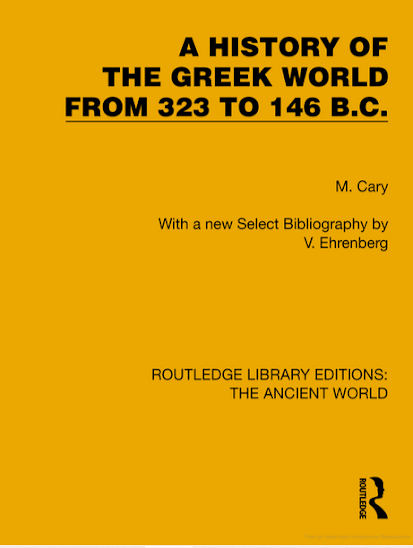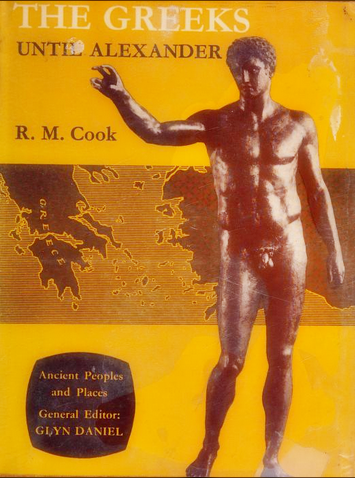Athenian
colony of strategic importance, near the fruitful Strymon vale and the Pangaion
gold mines. Amphipolis was founded in 438/ 437 BC, though the region had been
inhabited in the prehistoric period.
The
numerous finds from the excavations are housed in the Archaeological Museum of
Amphipolis and in the Archaeological Museum of Kavala.
Archaeological
finds from the mouth of the Strymon estuary show the presence of man from as
early as the Neolithic period on both banks of the river, and continuous
habitation into the Bronze Age period. The nearest Neolithic settlement to
Amphipolis was discovered on a hill adjacent to the ancient city known as Hill
133, where rich finds from its cemetery show that a considerable settlement
also existed in the Early Iron Age.
With the
foundation of the Greek cities at the mouth of the Strymon from the middle of
the 7th c. BC, Greek culture started progressively to penetrate into the
interior. The graves in the cemetery of the settlement on Hill 133 change their
form, and the grave goods are now dominated by cultural elements of the Greek
world: figurines, coins, and above all vases imported from the cities of
southern Greece (Corinth, Athens) and the Ionian cities of the north Aegean.
The presence of the Ionian world is also apparent in the sculptures of the late
Archaic and early Classical periods found in the neighbourhood of Hill 133 and
on the site of ancient Amphipolis. Local tradition survives in the metal
working, especially the bronze and gold ornaments.
After they
established themselves at Eion, at the mouth of the Strymon, in 476 BC, the
Athenians made their first abortive attempt at colonising in the Amphipolis
area with their short-lived settlement at the site of Ennea Hodoi, which was
quickly wiped out (464BC). It remains an open question whether Ennea Hodoi is
to be identified with the settlement on Hill 133, where the destruction level
dates to the mid-5th century BC, or with Amphipolis itself, where in the vicinity
of the north wall excavation has uncovered an establishment prior to the 5th
century BC wall.
The
foundation of Amphipolis finally in 438/ 437 BC, in the time of Pericles, by
the general Hagnon was a great success for the Athenians, whose chief purpose
was to ensure control of the rich Strymon hinterland and the Pangaion mines.
Their success, however, was again short- lived, because at the end of the first
decade of the Peloponnesian War (442 BC) Amphipolis broke away from its mother
city, Athens, and remained independent until its incorporation into the kingdom
of Macedonia by Philip II (357 BC).
Under the
Macedonians Amphipolis remained a strong city within the Macedonian kingdom,
with its own domestic autonomy and having considerable economic and cultural
prosperity. Excavation has revealed a large part of the walls and some of the
sanctuaries and public and private buildings of the city.
The bigger
and better protected gate of the city (gate C) lies at the norhtern part of the
walls. The brigde over the Strymon river was made of wooden beams.
After the
Roman conquest of Macedonia (168 BC) Amphipolis was made the capital of
Macedonia Prima, one of the four divisions into which Macedonia was divided.
The Roman period was a time of prosperity within the bounds of Roman world
dominion. As a station on the Via Egnatia and the capital of a rich hinterland,
the city grew economically and culturally. It did indeed experience
devastations and sackings, but with the support of the Roman emperors, particularly
Augustus and Hadrian, it remained one of the most important urban centres in
Macedonia until late antiquity. The city's prosperity is reflected in its
monumental buildings with mosaic floors and mural paintings as well as the
archaeological finds brought to light in the excavations.
Η πόλη ιδρύθηκε το
438/7 π.Χ., η περιοχή όμως είχε κατοικηθεί ήδη από την προϊστορική εποχή.
Αρχαιολογικά ευρήματα από την περιοχή των εκβολών του
Στρυμόνα αποδεικνύουν ήδη από την Νεολιθική εποχή την ανθρώπινη παρουσία και
στις δύο όχθες του ποταμού και τη συνέχεια της ζωής ως και την εποχή του
Χαλκού. Ο πλησιέστερος στην Αμφίπολη νεολιθικός οικισμός εντοπίσθηκε σε
γειτονικό στην αρχαία πόλη λόφο, γνωστό ως Λόφο 133, όπου αργότερα αναπτύχθηκε
σημαντικός οικισμός στην Πρώιμη εποχή του Σιδήρου, όπως μαρτυρούν τα πλούσια
ευρήματα του νεκροταφείου του.
Από τα μέσα του 7ου π.Χ. αιώνα, με την ίδρυση των ελληνικών
πόλεων στις εκβολές του Στρυμόνα, αρχίζει η προοδευτική διείσδυση του ελληνικού
πολιτισμού στην ενδοχώρα. Οι τάφοι στο νεκροταφείο του οικισμού του Λόφου 133
αλλάζουν μορφή και στα κτερίσματά τους επικρατούν τα πολιτιστικά στοιχεία του
ελληνικού κόσμου, ειδώλια, νομίσματα, και προπαντός αγγεία επείσακτα από τις
νοτιοελλαδικές πόλεις (Κόρινθο, Αθήνα) και από τις Ιωνικές πόλεις του Βόρειου
Αιγαίου.
Η παρουσία του ιωνικού κόσμου είναι εμφανής και στα γλυπτά
υστεροαρχαϊκών και πρώιμων κλασικών χρόνων που βρέθηκαν στην περιοχή του Λόφου
133 αλλά και στη θέση της Αρχαίας Αμφιπόλεως. Η τοπική παράδοση επιβιώνει στη
μεταλλοτεχνία και προπάντων στα χάλκινα και χρυσά νομίσματα.
Μετά την εγκατάστασή τους στην Ηιόνα, στις εκβολές του
Στρυμόνα, το 476 π.Χ., οι Αθηναίοι πραγματοποίησαν και την πρώτη ανεπιτυχή
απόπειρα αποικισμού στην περιοχή της Αμφιπόλεως με την βραχύχρονη εγκατάστασή
τους στο πόλισμα Εννέα Οδοί, που γρήγορα αφανίστηκε (464 π.Χ.). Παραμένει ακόμα
ανοιχτό για την έρευνα πρόβλημα η ταύτιση των Εννέα Οδών με τον οικισμό του
Λόφου 133, το στρώμα καταστροφής του οποίου χρονολογείται γύρω στα μέσα του 5ου
αιώνα π.Χ. ή με την ίδια την Αμφίπολη, στην περιοχή του βόρειου τείχους της
οποίας, οι ανασκαφές έχουν εντοπίσει μια προγενέστερη από το τείχος του 5ου
αιώνα εγκατάσταση.
Στην εποχή των Μακεδόνων η Αμφίπολις αναδείχτηκε σε ισχυρή
πόλη του Μακεδονικού βασιλείου με εσωτερική αυτονομία και με σημαντική
οικονομική και πολιτιστική άνθιση.
Οι ανασκαφές έχουν αποκαλύψει μεγάλο μέρος από τα τείχη και
ορισμένα από τα ιερά και τα ιδιωτικά και τα δημόσια κτήρια της πόλης.
Μετά την κατάκτηση της Μακεδονίας από τους Ρωμαίους (168
π.Χ.) η Αμφίπολις ορίζεται πρωτεύουσα της Πρώτης Μερίδος της Μακεδονίας.
Η Ρωμαϊκή Εποχή είναι για την Αμφίπολη περίοδος ακμής μέσα στο πλαίσιο της κοσμοκρατορίας των Ρωμαίων. Σταθμός της Εγνατίας Οδού και πρωτεύουσα μιας πλούσιας ενδοχώρας, η πόλη αναπτύσσεται οικονομικά και πολιτιστικά. Γνωρίζει βέβαια καταστροφές και λεηλασίες αλλά με την υποστήριξη και των Ρωμαίων αυτοκρατόρων, ιδιαίτερα του Αυγούστου και του Αδριανού, παραμένει ένα από τα σημαντικά αστικά κέντρα της Μακεδονίας ως την ύστερη αρχαιότητα. Η ακμή της πόλης αντικατοπτρίζεται στα μνημειακά κτήρια με τα ψηφιδωτά δάπεδα και τις τοιχογραφίες, αλλά και στα αρχαιολογικά ευρήματα που οι ανασκαφές έχουν φέρει στο φως.

.jpg)


















.png)






































